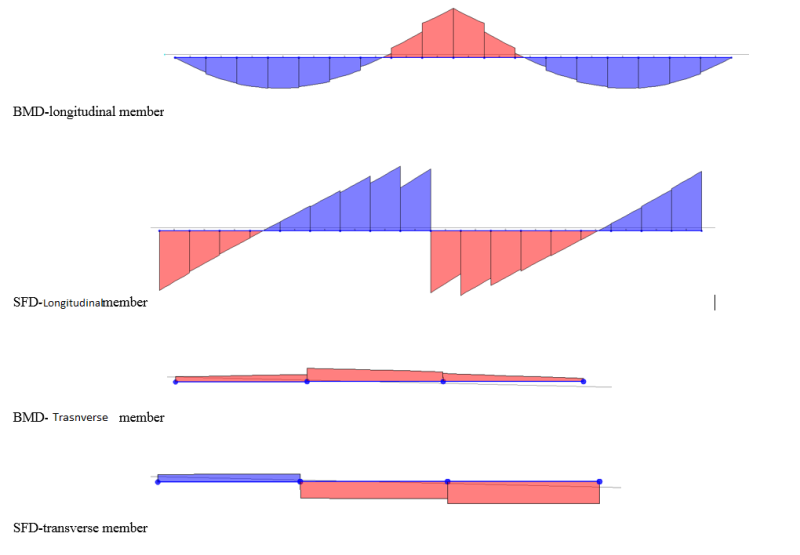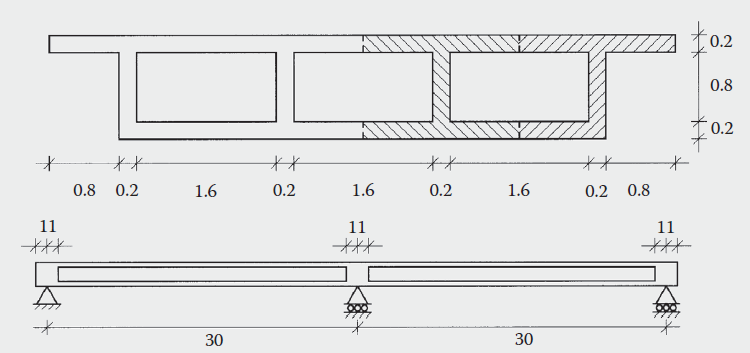Shz713
Structural
- Aug 21, 2015
- 221
Good day y'll;
I have some questions with respect simplifications made in bridge grillage model. I have read 'Bridge deck behaviour by Hambly' and 'bridge deck analysis by O'Brien'; but couldn't find what I was looking.
-If the cross section of deck varies throughout each span (e.g. thickness of web or slab is varying), should neutral axes changes accordingly? Or average is taken? NA is needed for calculating second moment area, cross sectional area
-I know that 'dummy members' are used to transfer the loads such as parapet load. How their properties are calculated?
Enclosed is a grillage example by Hambly for refreshing the concept!
Shoot for the Moon, even if U miss, U still land among Stars!
I have some questions with respect simplifications made in bridge grillage model. I have read 'Bridge deck behaviour by Hambly' and 'bridge deck analysis by O'Brien'; but couldn't find what I was looking.
-If the cross section of deck varies throughout each span (e.g. thickness of web or slab is varying), should neutral axes changes accordingly? Or average is taken? NA is needed for calculating second moment area, cross sectional area
-I know that 'dummy members' are used to transfer the loads such as parapet load. How their properties are calculated?
Enclosed is a grillage example by Hambly for refreshing the concept!
Shoot for the Moon, even if U miss, U still land among Stars!


